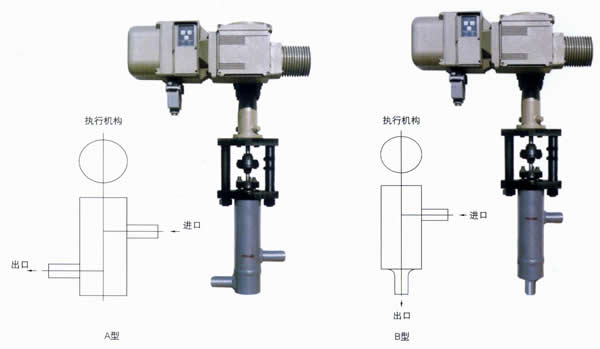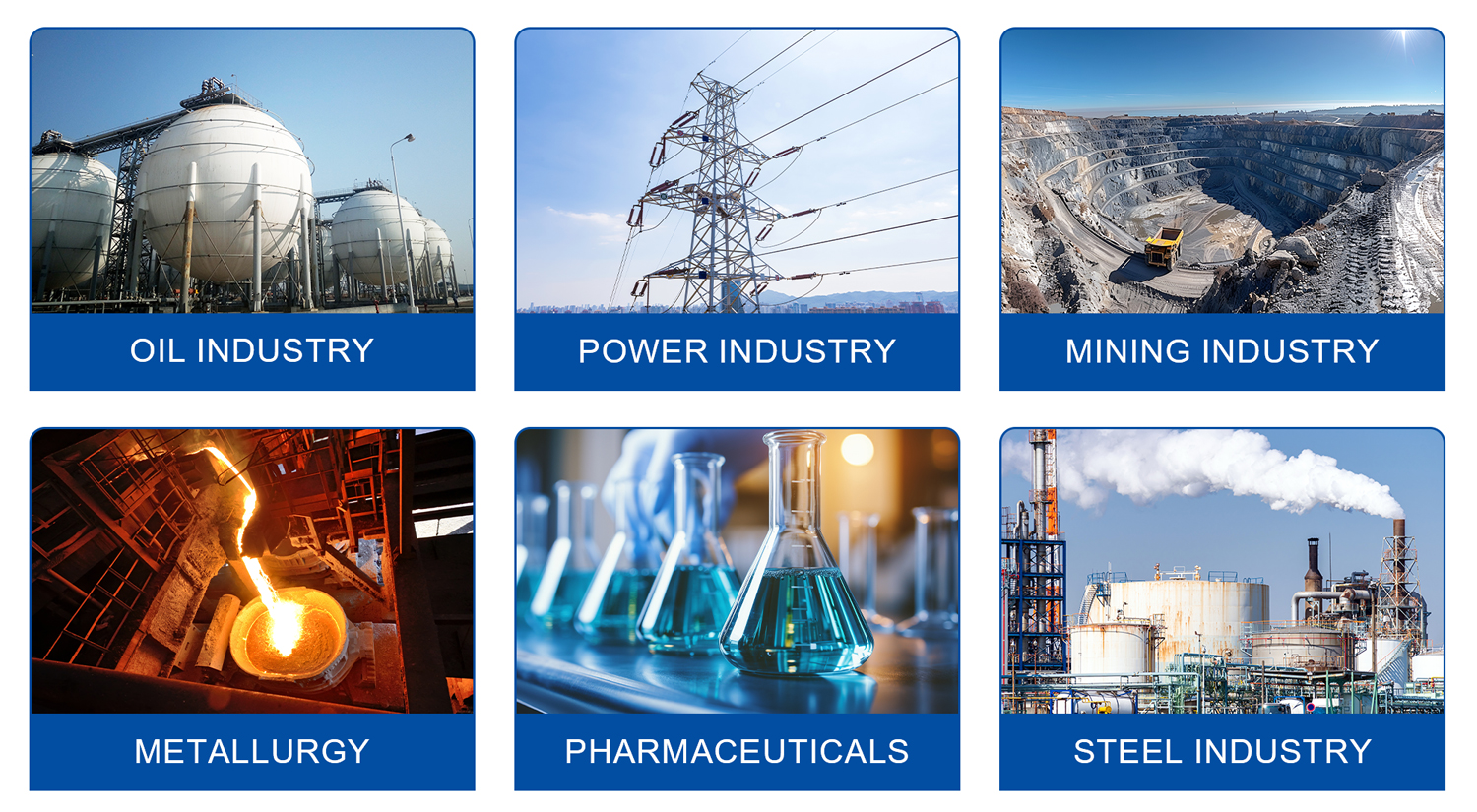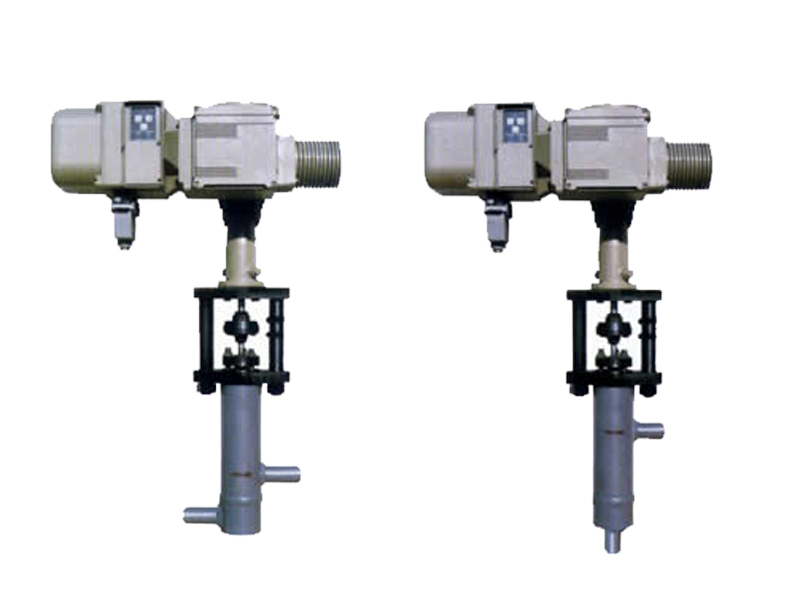GTE Boiler Continuous Blowdown Regulating Valve
GTE Boiler Continuous Blowdown Regulating Valve
A control valve is an automated device used to precisely control process parameters such as fluid flow, pressure, and temperature.

A control valve is an automated device used to precisely control process parameters such as fluid flow, pressure, and temperature. It changes the flow or pressure of the fluid passing through the valve by adjusting the valve opening, and is widely used in various industrial process control systems, such as petroleum, chemical, electric power, water supply, air conditioning, and other fields. The core function of a control valve is to precisely adjust the fluid flow, realize automated process control, and ensure the stability, efficiency, and safety of the production process.
※ Structural Features
Valve body and valve core
The valve body of the regulating valve is the main part of the entire valve. It is usually made of stainless steel, cast iron, copper alloy and other materials, with good corrosion resistance, high temperature resistance and strength. The valve body usually includes a valve seat and a valve core, which together determine the flow rate of the fluid. According to the flow requirements of the fluid, the opening of the valve core will be adjusted at any time to ensure precise control.
Actuator
The actuator is an important part of the regulating valve. It is responsible for adjusting the opening of the valve according to the control signal (such as 4-20mA, 0-10V and other analog signals). The actuator is usually composed of an electric actuator, a pneumatic actuator or a hydraulic actuator. The electric actuator drives the opening or adjustment of the valve through an electric motor, while the pneumatic actuator drives the valve action through changes in air pressure. The accuracy of the actuator directly affects the performance of the regulating valve.
Control system
The control system of the regulating valve receives the process parameters (such as flow, pressure, temperature, etc.) fed back by the sensor and transmits this information to the actuator to adjust the opening of the valve. Common control methods include switch control, PID (proportional, integral, differential) control, etc. The control system accurately controls the flow or pressure of the fluid according to the needs of the specific application.
Valve seal and flow characteristics
Control valves are usually equipped with high-performance seals to ensure that they can effectively prevent leakage in environments such as high pressure, high temperature, and corrosive media. In terms of flow characteristics, the design of control valves usually chooses different flow characteristics such as linear, equal percentage or fast opening to meet different control requirements.
※ Main Parts Materials

※ Kv Value and Stroke

※ Installation

※ Product Advantage
Precise regulation
It can accurately control process parameters such as flow, pressure, temperature, etc. to ensure the stability of the production process.
Automation control
Combined with the automation system, it can realize remote operation and intelligent control, reducing manual intervention.
Quick response
The quick response capability of the actuator makes the adjustment process more flexible and efficient.
High reliability
It has high pressure resistance, temperature resistance, and corrosion resistance, and can adapt to various harsh working environments.
※ FAQ
What are the installation requirements for control valves?
The valve should be installed at the appropriate position of the pipeline to ensure that the flow direction is consistent with the direction indicated by the valve body; secondly, check whether the valve and its accessories are intact before installation to ensure that there is no damage; during installation, ensure that the pipeline connection is stable to avoid stress concentration and prevent damage to the valve; in addition, sufficient space should be provided for the valve to facilitate adjustment, inspection and maintenance; finally, the valve should be protected from excessive vibration or temperature, especially under high pressure and high temperature environments.
What are the common applications of temperature and pressure reducers?
Temperature and pressure reducers are widely used in many fields. They are mainly used in steam systems to reduce high-pressure steam to appropriate pressure to ensure safe operation of equipment. They are commonly used in power, fertilizer, food processing and other industries. They are also used in oil and gas pipelines, chemical production, pharmaceutical plants, etc. to ensure stable pipeline pressure and avoid system overpressure or excessive temperature. In addition, reducers are also used in HVAC, metallurgy and other industries to adjust the temperature and pressure of the fluid in the system to ensure the smooth progress of the process.
How to maintain medium and high pressure valves?
When maintaining medium and high pressure valves, first check the wear of key components such as valve body, valve seat, sealing ring and valve stem regularly. Clean the valve to prevent impurities from blocking and affecting operation. Check the operating performance of the valve to ensure flexible opening and closing without sticking. Check the sealing to prevent leakage and replace the seals if necessary. For valves that operate at high pressure for a long time, it is recommended to perform functional tests regularly to ensure their reliability under high pressure environment. In addition, check the connection parts of the valve to avoid looseness or leakage caused by vibration or corrosion.
※ Industry Applications

※ Company Introduction
Jiangsu Gaote Valve Industry Co., Ltd. was established in 2003. The company is a medium-sized enterprise specializing in the production of various petrochemical and power station valve series. The main products include high-temperature and high-pressure power station valves, gate valves, stop valves, ball valves, check valves, butterfly valves, instrument valves, needle valves, regulating valves and non-standard special valves for power stations, etc. Hundreds of varieties and specifications of valves, products are widely used in power, petrochemical, metallurgy, pharmaceutical, mining, steel, mining, water supply and drainage and other industries. The company's R&D team actively explores the field of valves and explores a path of industrial upgrading from ordinary valves to valves.
Jiangsu Gaote Valve Industry Co., Ltd. is an innovative demonstration enterprise of small and medium-sized enterprises in Jiangsu Province. It is located in the Economic Development Zone of Funing County, Jiangsu Province, and National Highway 204 passes through the territory. The company has passed the ISO9001 quality system certification and the special equipment manufacturing license of the People's Republic of China. It is a member unit of the power station accessories supply of the State Power Corporation, a member unit of the Sinopec Equipment Resources Market, and a member unit of the first-level supply network of China National Petroleum Corporation. It has gradually established a good reputation in power station valves. The company has an advanced management mechanism, with fixed assets of more than 30 million yuan, more than 100 sets of sophisticated mechanical processing equipment and inspection and testing equipment, and more than 10 technical R&D personnel, forming an integrated production, sales and service.









